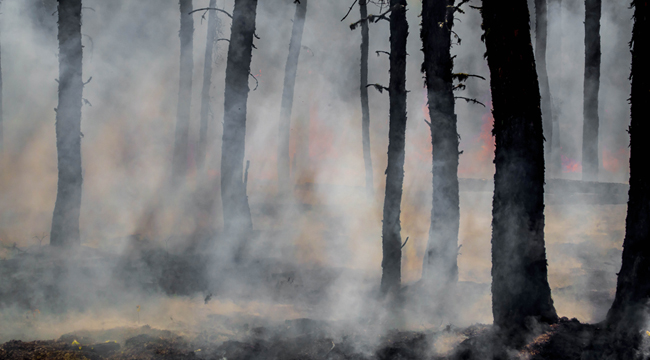
National Parks in California, Idaho, Montana, and Oregon don’t just have to be prepared for wildfires, they have to expect them. It’s simply part of the climate and ecosystem of these regions.
“Southern California, for example, has a Mediterranean climate,” explains Dr. Martha Witter, a fire ecologist for the National Park Service. “So every single year, there’s little to no rainfall from about March to October or November. The vegetation becomes very dry and susceptible to burning. When fall comes around, and you’ve had about five or six months without rain, that’s the time of year when we get the Santa Ana winds. If you have the combination of dry vegetation, Santa Ana winds, and you happen to get that ignition, it can start a fire under those conditions that can be very difficult to control or stop.”
Witter studies all aspects of how a wildfire can affect a park environment — from what happens to the plants and animals to how the soil and water change. Her research helps the teams of experts deployed to parks after a fire be prepared to effectively protect and restore burned environments. Many times, she’s on site — assessing damage before a fire is even out.
With prime hiking season coming up, we asked Dr. Witter to explain the basics of wildfire recovery in the days, months, and years after the embers die out.
The three major stages of how parks recover their trails after a wildfire:
1. Initial Stabilization
Right in the aftermath of the fire, we have teams that come in and do assessments. We call them Burned Area Emergency Response teams (BAER). These people — who are comprised of foresters, hydrologists, geologists, and more — will come and they will inspect the trails. They’ll inspect the roads as well. A lot of the fire crews, before they are demobilized, will go out and check trees along roads and trails. Those teams inspect the trails to identify what areas are going to need work after rainfall. They identify which areas are dangerous and need to be closed until they can be cleaned up.
There’s a lot of activity that goes on in the aftermath of a fire. Especially in those first days.
2. The Work To Reopen And Maintain Over The Next Year
For our trails, the park service has regular trail crews. Those people become very, very busy after one of these fires. There is a tremendous amount of work. There is a lot of black fall and debris, there’s a lot of mud. There’s a lot of clean-up and reconstructing of trails that goes on. What normally happens is that many of the areas are closed at first because they’re really not safe for people to enter. There are trees falling down. There are rocks falling down. There is mud covering everything. There’s just a lot of work that goes into cleaning those areas up.
Then, because the fires basically burn off all the above ground vegetation, the soil is exposed for at least the first winter when we get rain. You naturally have a lot of erosion and sediment deposition. If you have extreme rainstorms, then you can also get debris flows. Like what was seen in Mendocino after the Thomas fire. Always in that first year following a fire, if you get anything like a normal rain year, there is a tremendous amount of cleanup on roads, trails, and sometimes homes that were built in the wrong location. There’s a lot of mud and water that comes down. Someone has to clean it up and put it somewhere.
3. Long-term Recovery For Native Species
If things are working right, meaning, if you haven’t had a fire too recently in the past, and you get enough rainfall during the winter, the plants will come back on their own. They really are adapted to fire. There are seeds and seed banks that are going to be sprouted. They will re-sprout in shrubs. They’re going to pull stored carbon reserves, and put out new shoots. Normally, in southern California and chaparral systems, you don’t need to do species recovery. But we have an area that’s had a lot of disturbances, from activities and frequent fires. Wildfires are re-occurring more frequently than they should. So, for some areas, you may want to try and do restoration of the plants. After a fire is a good time to try and do that. In that case, you can put back species that have been eliminated.






